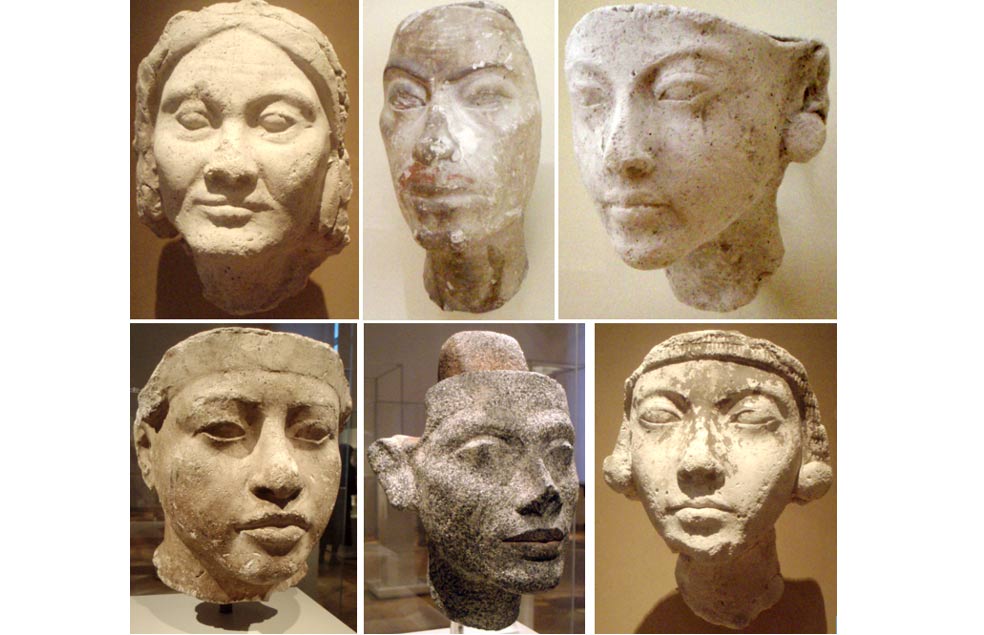The Unique Sculptures of Thutmose…and a Secret Love for One of His Muses?
When leaving his workshop in Amarna, the sculptor Thutmose may have wanted to forget something very painful. A story which may have been carved in his heart perhaps? He decided not to take some of his sculptures with him, and left them instead in an abandoned city. Even the bust of the most beautiful woman of his times remained on the wooden shelf.
Discovery and Lies
That bust was discovered in 1912 by a German archaeological team led by Ludwig Borchardt of the German Oriental Company. During the exploration of several parts of Amarna they discovered the workshop of the sculptor. According to Borchardt, the famous bust stood on the shelf for years, maybe even centuries, before it became so corroded that the sculpture fell down on the sand brought into the damaged house by the wind. It stayed like this until December 6, 1912 when the beautiful bust was found by archaeologists.

Portrait of Ludwig Borchardt. (Public Domain)
When the group of researchers saw the incredibly beautiful face of the woman, they were speechless. Immediately they knew that this artifact would be one of the most famous ancient Egyptian treasures in the world. Thus, German Oriental Company began their attempts to receive an agreement to bring the bust to Germany.
They didn't want to show the Egyptians how beautiful the sculpture they discovered was, so the Germans brought them an official photograph of the bust instead - one which didn't portray its beauty quite so much. During the inspection by Gustave Lefebre, whose opinion was very important for the final decision about sharing the artifact unearthed during the excavations, the bust was left wrapped in a box.
- Tiye: One of the Most Influential Women of Ancient Egypt
- The Elusive Tomb of Queen Nefertiti may lie behind the walls of Tutankhamun's Burial Chamber
It should be noted that at the beginning of the 20th century the practice of sharing an artifact between Egypt and the country that completed the archaeological mission and found the item was completely normal. But Borchradt knew that if the Egyptians found out the truth of the wonderful artifact he chanced upon, they would never allow him to take it to Germany. His trick paid off so well for his country that nowadays the famous bust of one of the most beautiful ancient woman is still at a museum in Berlin.
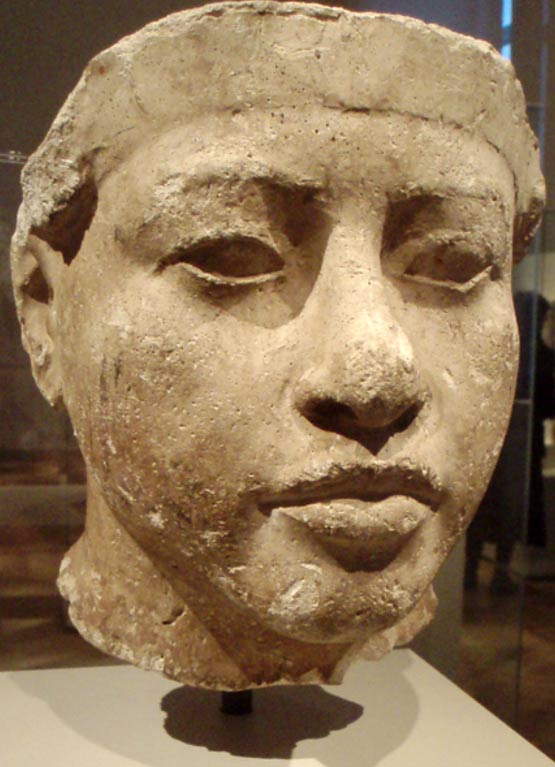
Portrait study thought to represent Amenhotep III, the father of the pharaoh Akhenaten. Originally discovered within the workshop of the royal sculptor Thutmose at Amarna, now part of the Ägyptisches Museum collection in Berlin. (CC BY-SA 2.5)
The Artist Behind the Legendary Beauty
His full title was "The King's Favorite and Master of Works, the Sculptor Thutmose", and he was the creator of the most famous sculptures of the Amarna Period. The impressively advanced work of the artist surprised future researchers with his skills. The unusual style he had compared to other ancient Egyptian artists was also a surprise. What Thutmose created was nothing like the rest of the art in the region. His workshop was located in the southern part of Amarna, between other workshops which created items for temples and palaces in the city.
There are a few other artists of this period whose names are known like: Bak, son of Men, or Juti, who was the sculptor for Queen Tiye. However, Thutmose was not only an artist, but an influential official on the court of Akhenaten and Nefertiti. His workshop was more like a factory. It produced an impressive number of artifacts, especially busts of the pharaoh’s family. During excavations, the house of Thutmose and his family was uncovered. It was located next to the workshop.

The Great Royal Wife Tiye, matriarch of the Amarna Dynasty - now in the Neues Museum/Ägyptisches Museum in Berlin, Germany. (Public Domain)
It seems that when he was leaving Amarna, Thutmose took everything that had a special meaning for him. But he decided to leave some old sculptures. He may have been aware that after the collapse of Amarna, the old trends in art would be rekindled and there was no place for the statues of the unique style of his workshop. The pieces he made were very natural and seemed to be created like real portraits of the people he wanted to portray.
It is possible that the royal family posed for these sculptures. Apart from the bust of Nefertiti, archaeologists discovered a collection of realistic masks, which seemed to be very important in the process of making the sculptures. In Thutmose's workshop, 22 cast heads were found. They could be sort of a ''library of patterns'' for artists. Some of them were identified as Akhenaten, Kiya, Amenhotep III, Ay, and some of the pharaohs’ daughters.

Plaster face of a young Amarna-era woman, (thought by many to represent Kiya, one of Akhenaten's wives). (CC BY-SA 2.5)
The greatest secret of his story is the role of Thutmose in the life of Queen Nefertiti. The discoveries in his workshop suggest that the sculptures of the queen had a special meaning for Thutmose. It is likely that none of his workers nor students worked on them, only Thutmose himself.
Secret Love or a Romantic Wish?
Thutmose portrayed Nefertiti in different stages of her life. The realistic appearance of the woman who was very beautiful, but whose body was changing, is surprising. It is hard to believe that he could create what he did without looking directly at the model. At the same time, it seems that he must have done so quite often, so some researchers and writers came up with the idea that there could have been a romance between the queen and the artist. Behind the order for a new bust, there could also have been a dangerous love story.
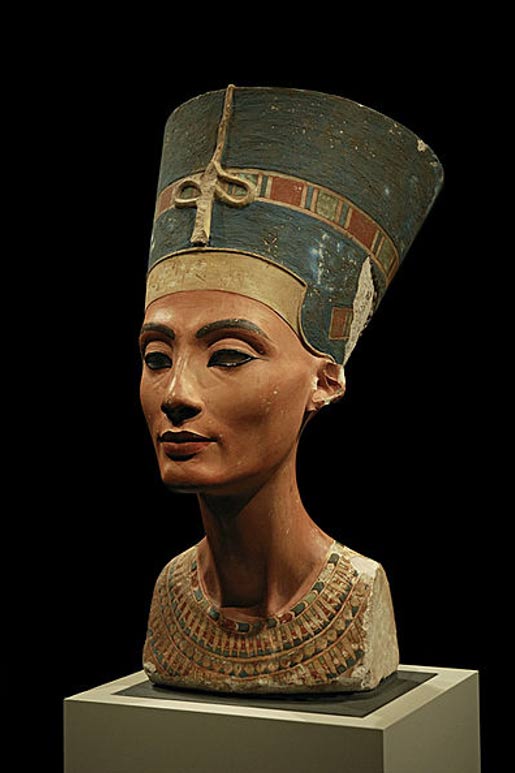
Bust of Queen Nefertiti in the Neues Museum, Berlin. (CC BY-SA 3.0)
One of the most unique presentations of the queen is the statue of the older Nefertiti - with wrinkles, a deeply lined forehead, and bags under eyes. It is unknown why a woman like Nefertiti would have wanted to be portrayed like this. Did she want to show herself as a symbol of power and fertility?
- Tutankhamun Death Mask was Made for Nefertiti, Archaeologist says
- Top Ten Ancient Egyptian Discoveries of 2014
The statue of the aging Nefertiti was found in the workshop. Thutmose depicted her with a drooping belly and thick thighs. It is obviously a presentation of an older woman who had given birth to several children.

Akhenaten and Nefertiti. (CC BY-SA 2.0 FR)
In Ancient Egypt people wanted to be remembered as young and beautiful, but this sculpture shows a self-confident woman, who allowed the artist to see the truth about her. This unique presentation sheds a light on the unusual bond between the artist and the queen.
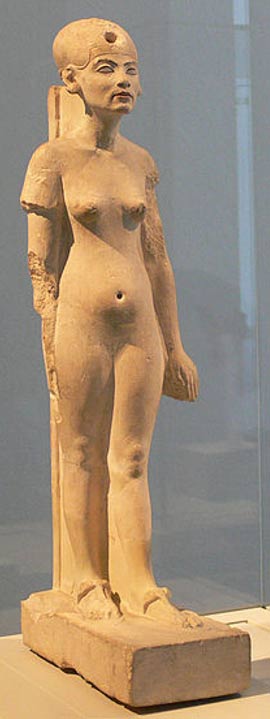
A standing/striding figure of Nefertiti made of limestone. Originally from Amarna, part of the Ägyptisches Museum Berlin collection. (Public Domain)
The Tomb of a Faithful Sculptor
In 2013, the French Egyptologist Alain Zivie declared that the tomb of Thutmose was found. In 1996, the team led by Zivie excavated a site in a subterranean gallery of the Saqqara necropolis called Bubasteion. They believed that this area contained only mummified animals, but they uncovered a small tomb holding the remains of a man identified as the sculptor Thutmose and his wife. The tomb was dated to the Amarna period, or soon after the end of the reign of Akhenaten. The descriptions in the tomb were well preserved.

Cat mummy of the second type. (Public Domain)
The most unique parts of the tomb are the painted decorations. From the inscriptions it is known that Thutmose painted many of them himself. It seems that the artist wanted to prepare the tomb on his own. The paintings show Thutmose with his wife and children. One painting even shows Thutmose and his wife painted in a double coffin. The greatest artist of Amarna painted himself dead on the walls of his tomb. The tomb also contained some artifacts in the Amarna style.
- Psusennes, the Silver Pharaoh with riches that rivalled those of Tutankhamun
- Egyptian Hieroglyphs: The Language of the Gods
Thutmose’s Unfinished Story
In the box room of Thutmose's workshop, archaeologists found about 50 sculptures which allowed them to identify many more of his works. The statues of Nefertiti which he created remain some of the most impressive pieces of ancient Egyptian art. Nowadays, Thutmose’s sculptures are the pride of exhibitions in museums in Cairo, Berlin, and New York. At the same time, researchers are still trying to solve the secrets of Thutmose, his workshop, and the magnificent pieces of art he left in the abandoned city.
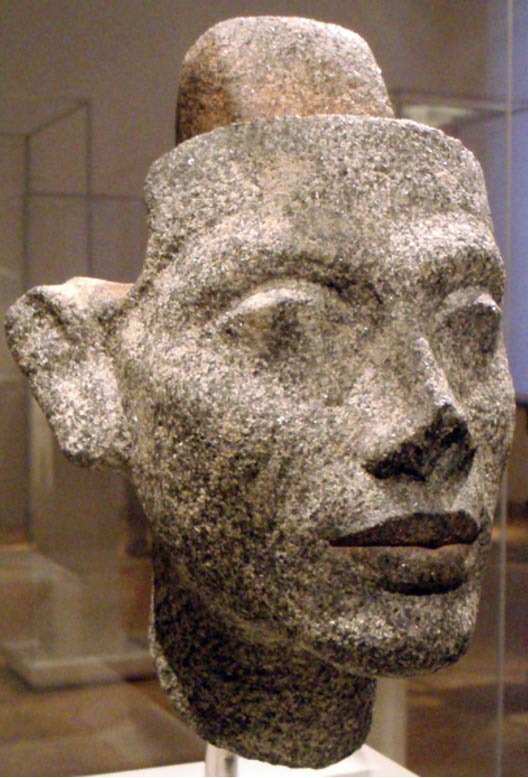
Granite statue of the head of Queen Nefertiti, from the workshop of the sculptor Thutmose. On display at the Ägyptisches Museum. (CC BY-SA 3.0)
Featured image: (clockwise) Plaster face of an older Amarna-era woman (CC BY-SA 2.5), Portrait study of a man, thought to be of Ay (CC BY-SA 3.0), plaster portrait study thought to represent Queen Nefertiti (CC BY-SA 2.5), Portrait study thought to represent of Amenhotep III (CC BY-SA 2.5), Statue of the head of Queen Nefertiti (CC BY-SA 3.0),Plaster face of an older Amarna-era woman (CC BY-SA 2.5)
References:
http://news.harvard.edu/gazette/story/2013/10/the-queen-and-the-sculptor/
Joyce Tyldesley, Nefertiti, 1998.
Joyce Tyldesley, Chronicle of the Queens of Egypt. 1996.
Cyril Aldred, Akhenaten: King of Egypt, 1988.
Bogusław Kwiatkowski, Poczet Faraonów, 2002.
Aidan Dodson, Dyan Hilton, The Complete Royal Families of Ancient Egypt, 2004.


















